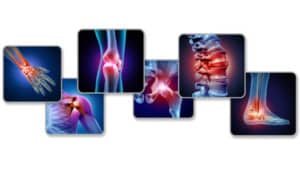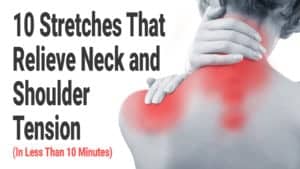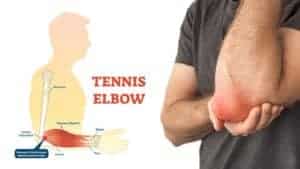If you’re struggling with a shoulder injury, particularly a rotator cuff injury, you are not alone. More than 250,000 people in America undergo treatment for a torn rotator cuff every year, according to a study published by ResearchGate.
Further, a separate study published by iData, a healthcare market research agency, noted that rotator cuff repairs rank as the second most commonly performed surgery in America in terms of orthopedic soft tissue repair procedures. And this particular type of shoulder injury is especially common among those who play sports.
Studies show that playing baseball, tennis, football, and golf, for example, not only strains the muscles in the shoulder but also increases the chances of suffering a rotator cuff injury. Of course, it is worth noting that these injuries are not only limited to those who play sports. For many older adults, rotator cuff-based injuries are just another part of getting older. According to a study published by eMedicinehealth.com, a well-regarded consumer health website, as we age, the muscles and tendons that would otherwise support the shoulder naturally start to degrade.
What Is a Rotator Cuff?
Now that we are more familiar with how prevalent rotator cuff injuries are in America and who is most likely to develop them let’s take a moment to learn more about this particular part of the shoulder.
One misconception when it comes to the rotator cuff is that it is a single muscle in the shoulder. And this couldn’t be any further from the truth. In reality, it is a group of muscles. They sit in the shoulder socket and make it possible to move one’s shoulder in many different directions. The rotator cuff, also known as RC muscles, consist of four muscles, and they each have tendons that accompany them. These four muscles include
- Subscapularis
- Supraspinatus
- Teres minor
- Infraspinatus
All four of these muscles extend from the scapula, also known as the shoulder blade, to the humerus where they form a cuff around the glenohumeral, the ball and socket joint of the shoulder, hence the name “rotator cuff.” Collectively, the bones, muscles, and tendons that make up the shoulder help facilitate a wide range of extremity movements. Each of these movements come into play in our day-to-day lives. Some of these movements include:
- Abduction
- Flexion
- Internal rotation
- External rotation
For the shoulder to perform these movements, all of its muscles be strong and evenly balanced as they each play a role in maintaining proper shoulder girdle function.

What You May Not Know About Torn Rotator Cuffs
Two different types of tears can happen when it comes to the RC muscles that make up the shoulder, the first being a partial tear, which is characterized by damaged subscapularis, teres minor, and infraspinatus muscles. It is also worth noting that partial tears do not impact the tendons and bones that make up the shoulder. Along with partial tears, some individuals develop complete tears that can negatively affect the shoulder. Complete tears are not too dissimilar from partial tears as both can damage the muscles in the shoulder. However, complete tears can also damage the tendons, causing them to pull away from the bones that make up the shoulder.
How to Tell If You Have Torn RC Muscles
As with any health problem, there a numerous tell-tale signs that will present themselves if an individual experiences a tear in their RC muscles. That said, some of the symptoms commonly associated with torn RC muscles include
- Being unable to raise one’s arms
- Shoulders that feel weak
- An inability to lift even light objects
- An audible clicking or popping sound with shoulder movements
While these symptoms might not always correlate with torn RC muscles, they often do. Therefore, if you’re experiencing any of these symptoms, you should schedule an appointment with a physician as soon as possible. In doing so, you can reduce your risk of developing shoulder problems that are even more severe. To stress just how important it is to see a physician when confronted by any of these symptoms, we need only take a look at a study published by Harvard Health Publishing, the publishing arm of Harvard Medical School, one of the most prestigious medical schools in America.
According to the study, roughly 10 percent of the individuals who do not seek treatment for torn RC muscles eventually go on to develop what is known as a “frozen” shoulder. Also known as adhesive capsulitis, a frozen shoulder is a condition characterized by severe pain and stiffness in one’s shoulder joint. And the long-term consequences of not seeking treatment do not end there.
Torn RC muscles that go untreated can potentially give way to arthritis of the shoulder, according to a study published by the American Academy of Orthopedic Surgeons. That being said, if you believe that you may have torn any of the RC muscles in your shoulder, either as a result of a sports injury or slip and fall, for example, you should not hesitate to see a physician.
How Are Torn RC Muscles in the Shoulder Diagnosed?
To pinpoint the cause of pain and mobility problems in an individual’s shoulder, most physicians will ask about the type of symptoms they are experiencing. They may also spend time going over their medical history as well. From there, they will conduct a physical exam, which will identify to what extent the range of motion in the individual’s shoulder is compromised. Next, the physician will likely want to see what is happening within the shoulder joint. For this, the physician will make use of one or more of the following:
X-rays
This aspect of the shoulder exam allows the physician to determine whether or not the arm bone, also known as the “humeral head,” is advancing into the shoulder socket that houses the RC muscles.
MRIs
Also known as magnetic resonance imaging, MRIs can provide physicians with a detailed image of an individual’s shoulder via magnetic energy and radio waves.
An ultrasound machine
This imaging device, which commonly used to assess the development of a fetus in its mother’s womb, can provide valuable insights regarding the extent of an individual’s shoulder injury. Unlike x-rays and MRIs, ultrasound imaging will enable a physician to view and, more importantly, gauge the health of the tendons and muscles in the shoulder.
What Treatments Are Available to Those Struggling With Torn RC Muscles?
Treatments for torn RC muscles can vary depending on the severity. Primarily, resting the shoulder can help torn RC muscles repair themselves in time. The following can also provide some much-needed relief from symptoms brought on by torn RC muscles:
Physical therapy
Physical therapy can go a long way toward easing pain and improving mobility for those with torn RC muscles. Generally speaking, physical therapy with a licensed physical therapist will include light exercises that can help strengthen the muscles and tendons of the shoulder, which not only provides relief from rotator cuff-related symptoms but also helps prevent future shoulder injuries. Some of the most popular and, arguably most effective, physical therapy exercises for those trying to overcome a torn RC shoulder muscles include
- Doorway stretches
- Reverse flys
- Side-lying external shoulder rotations
- High row exercises
- Low row exercises
It is worth noting that while these exercises can help repair a damaged shoulder, they can worsen shoulder pain and contribute to even more mobility problems if done incorrectly.

Surgery
In severe cases, surgery may be the only way to resolve pain and mobility problems caused by torn RC muscles. And this is especially true for those who have developed the condition as a result of a sports injury. The same applies to those who have injured their shoulder after a slip and fall. That said, the most commonly performed surgeries include
- Open shoulder surgery
- Mini-open shoulder surgery
- Arthroscopic shoulder surgery
Regardless of which surgical procedure an individual undergoes, it will take quite some time to heal. According to a study published by Johns Hopkins Medicine, it can take nine or more months for the shoulder to heal following surgery. Nonetheless, those who have undergone surgery have credited it with improving their overall quality of life.
Final Thoughts on Rotator Cuff Injuries
In summary, shoulder injuries, especially torn RC muscles, can be painful. Additionally, they can make going about one’s day-to-day life exceptionally difficult. So, if you have any of the symptoms of rotator cuff injury detailed in this article, schedule an appointment with a physician today.
The post Orthopedist Explains the Causes and Symptoms of Rotator Cuff Injury appeared first on Power of Positivity: Positive Thinking & Attitude.
【Top 10 Malaysia & Singapore Most Beautiful Girls】Have you follow?

